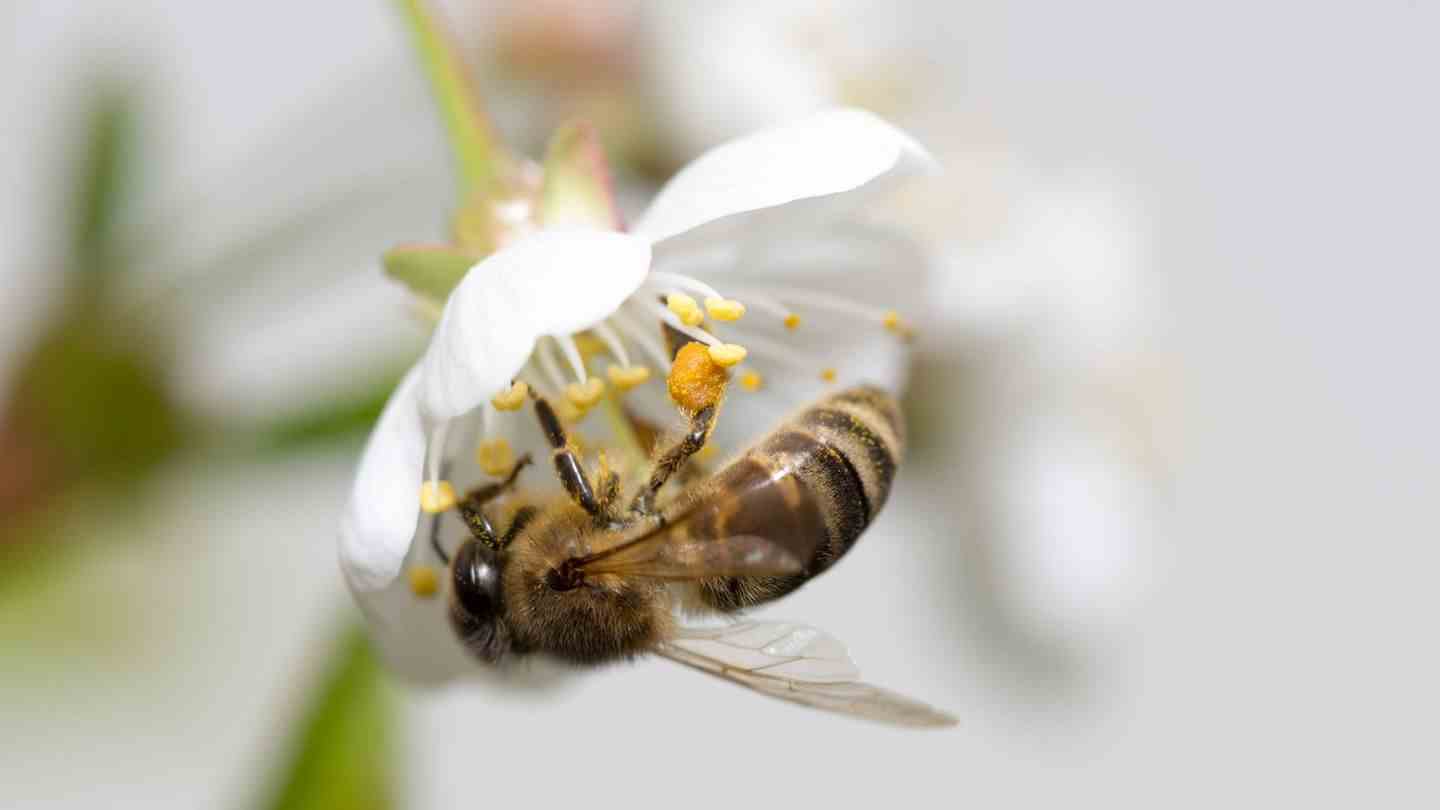Important food source
Bee-friendly balcony flowers: How to support the beneficial insects
You don’t need a garden to support bees, bumblebees and co. in their search for food, a balcony is enough.
© L_Shtandel / Getty Images
No fruit, no vegetables and no flowers — the world would be different without bees. If you want to support the flying beneficial insects, you can do a lot for them even without a garden. Bee-friendly balcony flowers provide food for the animals.
If you don’t have a garden but want to offer insects a source of food, you can support the animals with bee-friendly balcony flowers. Without honeybees and bumblebees, as well as many other insects, it would not be possible to fertilize crops. The support of the animals is therefore indispensable. Unfortunately, the nectar collectors do not always find enough food due to numerous large-scale monocultures in agriculture. If you have a balcony, that’s already enough to help the insects. You can find out here which plants are suitable and which solutions are available for shaded balconies.
How to plant the balcony in a bee-friendly way
With the help of bee-friendly balcony flowers as well as ornamental plants and herbs, the flying acrobats can partially cover the need for nectar and pollen. Varied planted pots and boxes on the balcony also support honey bees and co. When it comes to the composition, however, it is important to choose the right variety, because not all classic summer bloomers are bee-friendly balcony flowers.
After the ice saints, it’s time for bee-friendly balcony flowers
The name gives it away: During the Ice Saints between May 11th and 15th it can get freezing cold again. Ground frost can occur at night on these days, although spring has long since arrived. That’s why you only start planting bee-friendly balcony flowers after the ice saints.
Not everything that blooms is good
Popular species of flowers that bloom all summer, such as geraniums and petunias, are useless for insect feeding. This also applies to plants with double flowers, because then the supply of pollen and nectar is usually very low. These so-called double flowers are plants in which it is desired by breeders that the stamens are also petals, so they only offer color. Unfortunately, bees can no longer find pollen and nectar in it. When buying, you should therefore make sure that you only select flowering plants. Even if you only buy spring flowers, you can no longer offer the animals any food in summer.
Choose bee-friendly forage plants
Fortunately, there are a variety of bee-friendly balcony flowers. These include, for example:
- scented stone rich
- zinnia
- fan flower
- snowflake flower
- vanilla flower
- flour sage
You can even sow plants yourself, such as:
Those who have little or no sun on the balcony need not despair. Both the fuchsia and the bluebell also thrive on shady balconies and provide food for bees.
Long-term solutions
You have the choice between plants that you can purchase or grow new every year and those that do not have to be replanted every year. Perennials are therefore well suited as bee-friendly balcony plants, as are the bush mallow, red false coneflower, tall stonecrop and cranesbill. Herbs are also sensible choices, including lemon balm, kitchen sage, thyme, and alpine savory. Humans and animals both benefit from these bee-friendly balcony flowers.
In addition, you help the aerial artists if you do not use chemical pesticides, as these can harm the bees. You also give various insects a home in the form of a insect hotels (build it yourself or buy it).
Sources: my beautiful garden, Nabu, code check
You might also be interested in:
This article contains so-called affiliate links. Further information are available here.


